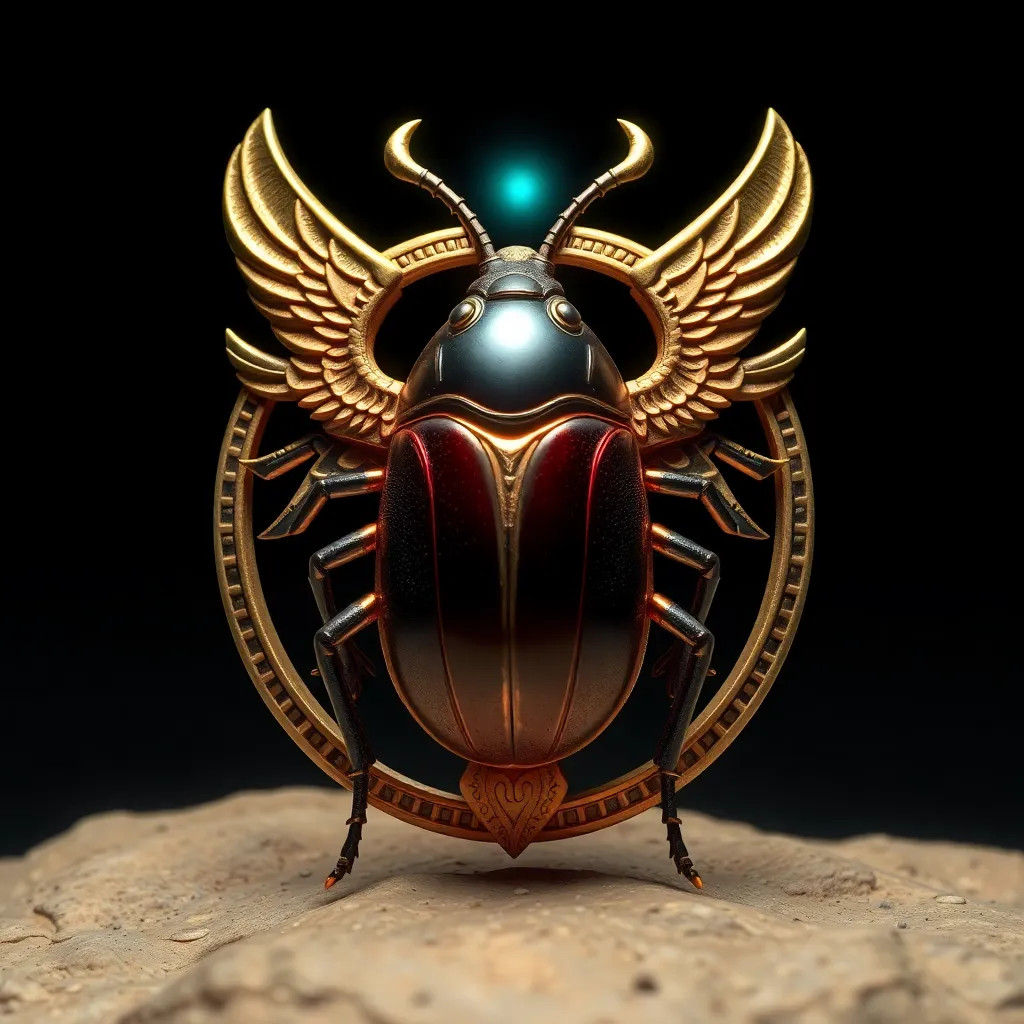The Cosmic Significance of the Sacred Scarab in the Afterlife
I. Introduction
The sacred scarab, known as the scarab beetle or dung beetle, holds a profound place in the mythology and symbolism of ancient cultures, particularly in Egypt. Revered not just for its ecological role but also for its spiritual significance, the scarab represents concepts of rebirth, transformation, and the cycle of life and death. In Egyptian mythology, where the afterlife was a crucial aspect of existence, the scarab emerged as a powerful symbol. This article aims to explore the cosmic significance of the sacred scarab in the afterlife, delving into its historical context, mythological connections, and its enduring legacy.
II. Historical Context of the Sacred Scarab
The origins of the sacred scarab in ancient Egypt can be traced back to the symbolic interpretations of this fascinating insect. The scarab was associated with the sun god Ra and the god Khepri, who represented the morning sun and the concept of creation.
- Origins and Symbolism: The scarab beetle rolls balls of dung, which ancient Egyptians interpreted as a symbol of regeneration and the life-giving forces of the sun.
- Rebirth and Transformation: Scarabs were seen as embodiments of rebirth, as they emerged from the dung ball, paralleling the idea of life emerging from death.
- Funerary Practices: Scarabs were commonly placed in tombs and funerary contexts, serving as protective amulets to guide the deceased into the afterlife.
III. The Scarab in Egyptian Mythology
The scarab is deeply intertwined with Egyptian mythology, particularly through its connections to Khepri, the god of creation. The myths surrounding the scarab not only highlight its physical attributes but also its cosmic journey.
- Connections to Khepri: Khepri is often depicted as a man with a scarab for a head, symbolizing the rising sun and the eternal cycle of life.
- Cosmic Journey: Myths describe the scarab rolling the sun across the sky, mirroring its role in the daily cycle of dawn and dusk.
- Symbolic Meanings: In the afterlife, the scarab symbolizes the soul’s journey, representing hope, renewal, and the promise of resurrection.
IV. The Scarab as a Guide for the Soul
In the context of the afterlife, the scarab played a vital role as a guide for the deceased. Ancient Egyptians believed that the scarab would aid the soul in navigating the challenges of the afterlife.
- Guiding the Deceased: The scarab was thought to assist souls in their journey through the Duat, the realm of the dead.
- Tomb Inscriptions: Scarabs were frequently depicted in tomb inscriptions and artifacts, reinforcing their role as protectors and guides.
- Aiding in the Afterlife: The presence of scarab imagery was believed to help the deceased overcome obstacles and achieve eternal life.
V. Cosmic Associations of the Scarab
The sacred scarab is not just a terrestrial symbol; it also possesses associations with cosmic elements, reflecting the interconnectedness of life, death, and the universe.
- Celestial Movements: The scarab was linked to the sun’s journey across the sky, embodying the cycles of day and night.
- Sun and Stars: It symbolized the sun’s rebirth at dawn and served as an emblem of the stars, connecting the earthly realm with the heavens.
- Microcosm of the Universe: The scarab represented the idea that the small could reflect the vastness of the universe, embodying creation and transformation.
VI. Rituals and Practices Involving the Sacred Scarab
The sacred scarab was central to numerous rituals and practices in ancient Egypt, particularly those related to funerary customs. It served both practical and spiritual purposes.
- Funerary Rituals: Scarabs were incorporated into elaborate burial rituals, symbolizing protection for the deceased’s journey.
- Scarab Amulets: Scarab-shaped amulets were worn for protection and to ensure safe passage to the afterlife.
- Modern Interpretations: Today, some spiritual practices continue to honor the scarab, reviving ancient rituals and symbolism.
VII. The Sacred Scarab in Contemporary Spirituality
In modern times, the sacred scarab remains a powerful symbol in various spiritual and cultural contexts, transcending its ancient origins.
- Modern Spiritual Practices: The scarab is often embraced in contemporary spirituality as a symbol of transformation and renewal.
- Art and Culture: Artists and designers draw inspiration from the scarab, incorporating its imagery into jewelry, tattoos, and artwork.
- Enduring Legacy: The fascination with the scarab continues to thrive, with its symbolism resonating in various cultural motifs around the world.
VIII. Conclusion
In conclusion, the sacred scarab holds immense cosmic significance in the realm of the afterlife within Egyptian mythology. It embodies the concepts of rebirth, transformation, and the eternal cycle of life and death. As a symbol of hope and renewal, the scarab represents the human desire for continuity beyond mortality. Its enduring legacy captivates the imagination and continues to inspire spiritual practices, art, and culture in contemporary society. The sacred scarab remains a timeless emblem of the connection between the earthly and the divine, reminding us of the possibilities that lie beyond our mortal existence.




